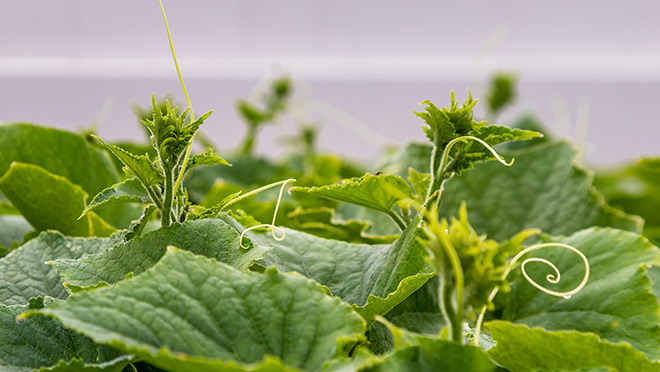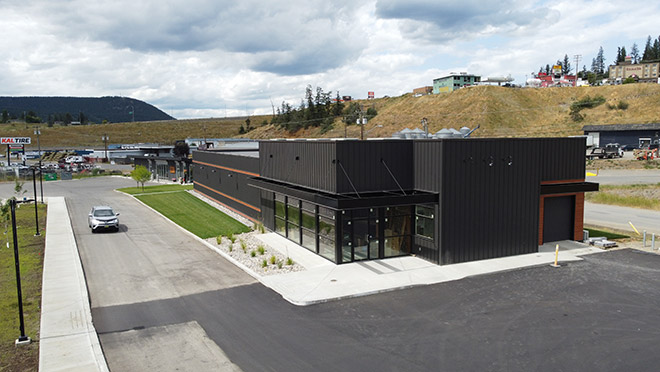As demand grows, know your LEDs for horticulture use

New LED standard is a 'game changer', and there's a lot to learn
The world of LED lighting for horticulture is complex and sometimes exasperating. Some customers will be early adopters with a depth of technical knowledge that's worth leaning on. Others will be curious, and will need a whole lot of help.
For those reasons, we're asking you as Alliance members to learn what you can about the basics while also urging you to contact us early as you weigh the specifics of available LED incentives.
"It's not like there's a cheat sheet that maps all these different crop types to the right luminaire," says Alliance account manager Tanya Perewernycky, with a knowing chuckle. "Some of the discussions we've had so far have been eye-opening. Some growers are so advanced that they know how much light and what type of light bulb is needed, down to the square foot, and they know what that will mean for crop production. It's like 'In a period of six weeks, we're going to produce X number of green peppers in that space.'"
While few at BC Hydro are experts on the specifics of LEDs for horticulture, there's one exception. Engineer David Rogers is considered a pioneer in that space, and he can go toe-to-toe with growers in the know. A world expert in hydroponics, Rogers has been watching all this closely. And he's not about to dumb things down.
"There are so many critical biological factors at play, such as plant species and photo-morphology and the role of lighting intensity and spectra on plant photosynthetic light absorption rates," he says. "We also have to consider environmental humidity, airflow and temperature management.
"In addition to the biological complexity, LED horticultural luminaires have had no industry standard benchmark until now."
The Design Lighting Consortium (DLC) recently introduced a new standard for LED horticultural luminaires, a move Rogers calls a "game changer". But while having a new standard is vital, he says there will be a steep learning curve as growers chase what he believes could be amazing results with their crops.
Eligible products are not listed in BC Hydro's e.Catalog. Instead, a sub-set of the DLC's horticultural lighting list is used.
So why would a customer change to LEDs? "Because it's the future," says Rogers. "It's a fascinating new area to explore. Just as long as you understand that changing from sodium to LED changes so much more than just the light. It changes everything."
Five steps to upgrading horticultural lighting
While the science of LED horticultural lighting can get complex, the incentive program is very straightforward. The customer's Key Account Manager or Regional Energy Manager will help you apply for up to 75% of your project cost – up to a maximum of $500,000.
Here's how it works:
1. Assess the lighting system and find savings
Vendors registered with BC Hydro's Alliance of Energy Professionals will understand how well a current system is performing and see what sort of savings might be available with LEDs.
2. Know the requirements
- The horticulture lighting upgrade will save a minimum of 50,000 kWh/yr.
- The customer is working with a Key Account Manager or Regional Energy Manager.
- The horticulture luminaires are:
- approved by the Design Light Consortium
- have a minimum efficacy of 2.3 µmols/J
- have a minimum Power Factor of 96%
- have a maximum Total Harmonics Distortion of 12%
- have additional requirements of % of blue, red and far red of total photosynthetic photon flux (PPF), depending on crop type
3. Confirm customer eligibility
If the Key Account Manager or Regional Energy Manager is satisfied that a customer is eligible, they'll set up a pre-engagement meeting with BC Hydro Engineering and the Alliance, who will review customer eligibility, explain the technical requirements and answer any questions.
4. Apply for the incentive
With project summary and the estimated incentive in hand, customers will work with an Alliance member, Key Account Manager or Regional Energy Manager to get the project submitted for the customer. You'll also need to submit any necessary supporting documents from you or your manufacturer.
5. Get approved and start the project
When BC Hydro has reviewed and approved the project and incentive, the project will be able to proceed. Remember – it's important that the customer not order any new equipment until approval is given.
6. Complete the project and receive the incentive
Once the new lighting is installed and the project is complete, provide the customer with the project invoices and update the lighting calculator with any revisions or adjustments. These documents should be submitted to BC Hydro for final review.
Working with a grower who is ready for LED lighting?
To find out more about LED lighting for horticulture, contact alliance@bchydro.com.
